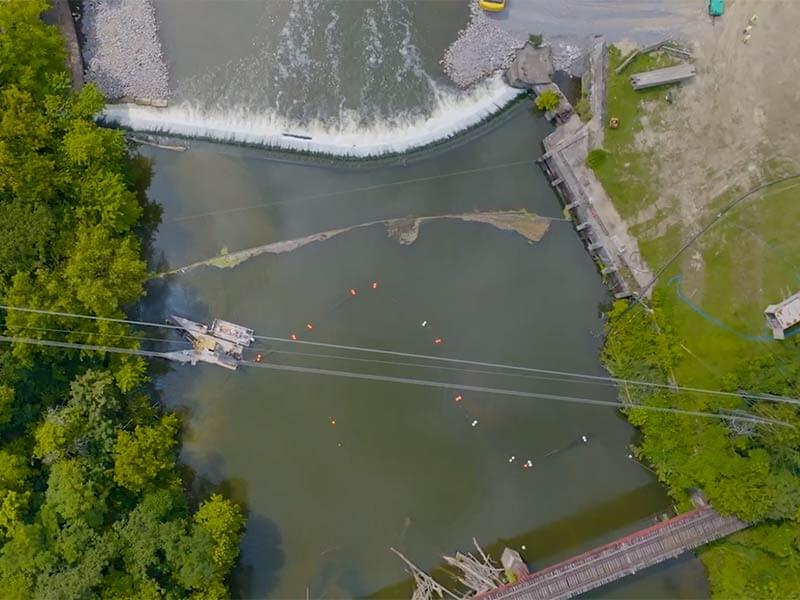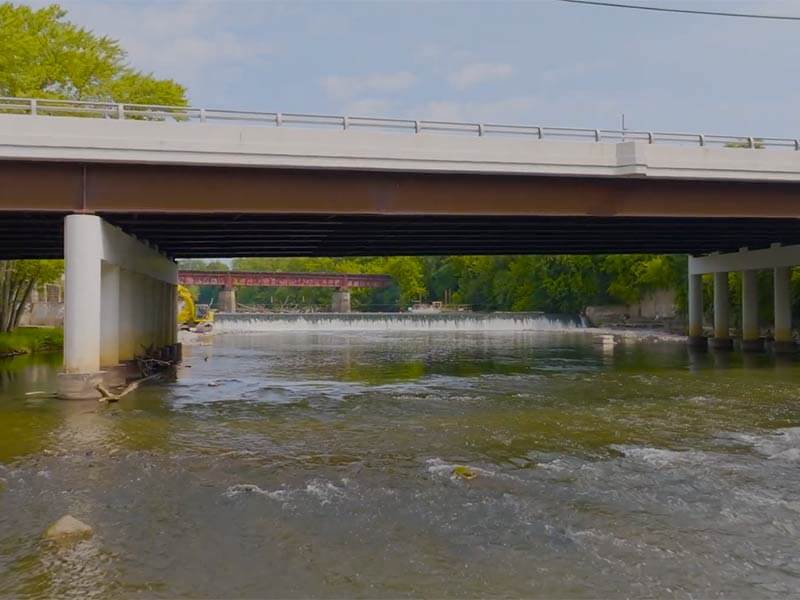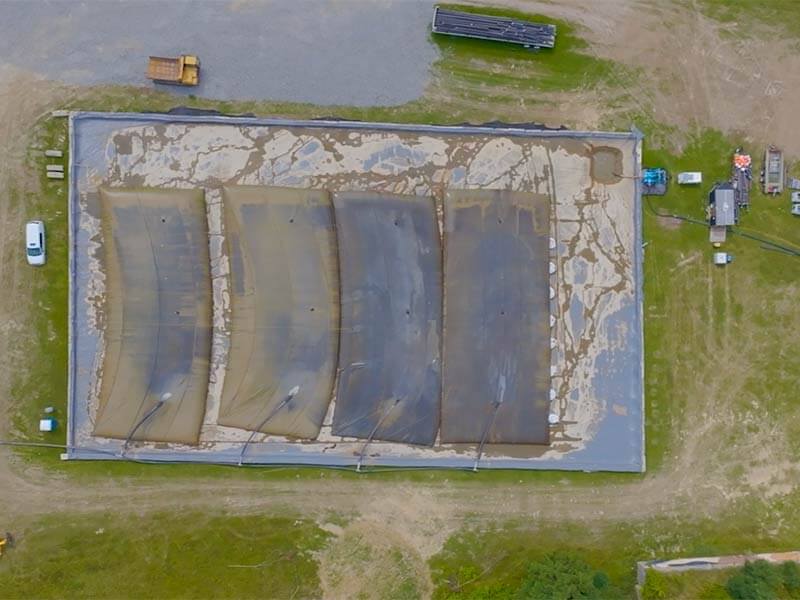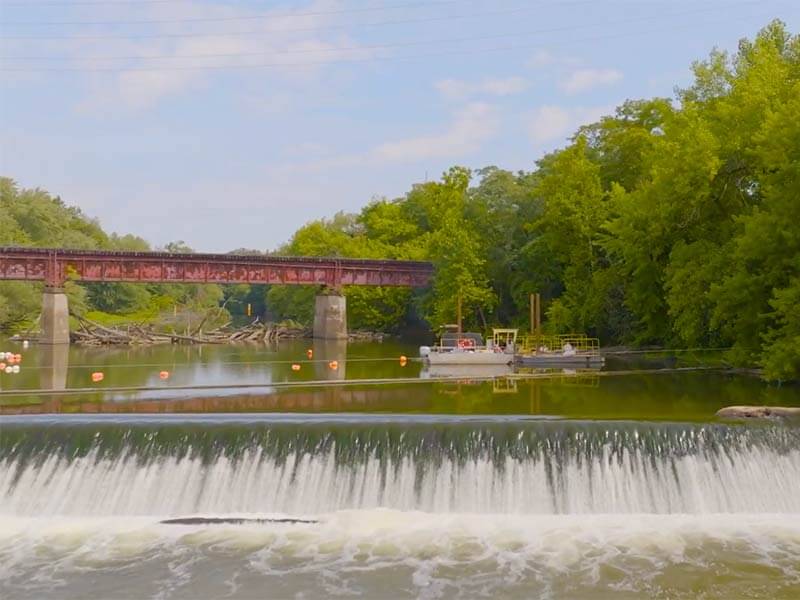The 28 mile stretch of the Mahoning River located in northeast Ohio traveling through cities such as Warren, Youngstown and Lowellville, Ohio was once heavily dominated by industry—in particular, steel mills and railroads. Over the years, sediments in the river, especially those deposited upstream from low-head dams, have become contaminated with a variety of chemicals. By 1970, the profitability of steel produced in the Mahoning Valley declined and eventually many of the mills went out of business. The decline of the steel industry and the enforcement of the Clean Water Act of 1972 resulted in greatly improved water quality in the river. However, harmful chemicals remained in the sediments on the banks and upstream of the low head dams. The contaminants include heavy metals and organic chemicals such as PAHs and PCBs.
The purpose of the City of Warren Summit Street Dam Removal Project was to remove one unused dam on the Mahoning River. The Project goal was to improve water quality, river morphology, aquatic habitat, fish passage, as well as to develop former industrial property along the Mahoning River. The Ohio EPA chose Metropolitan Environmental Services, Inc. as part of “Design Build Team” to remove 3,000 cubic yards of contaminated sediment from behind the dam and along slope toe areas on both sides of the river.
Dredge/dewatering Equipment Mobilization and Set-up
Metropolitan Environmental Services, Inc. utilized the following equipment and supplies to accomplish this task:
- Moray hydraulic spud dredge
- 4-90 feet circumference by 100 feet long geotextile tubes
- 240’X150’ 20 mil PVC liner
- 2’X2’X6’ precast concrete blocks
- 250’ of floating silt curtain with a 2’ tail
- Polymer
- 8” HDPE pipe
- 6” transfer pump
A crane was utilized to place the dredge and support boats into the river which had high banks and limited access in this section of the river. A 220’ by 130’ laydown area with a low-end sump was set up to hold the geotextile tubes. The laydown area included a 20-mil PVC liner with concrete barrier walls made of precast blocks to contain the filtrate from the dredging operation. 8” HDPE dredge pipe was fused and fed from the farthest contaminated location on the Mahoning River to the geotextile tube laydown area. Four 90’ circumference by 100’ long geotextile tubes were placed within the laydown area and 8” HDPE dredge pipe equipped with T-valves was set-up to feed into one of the fill ports on each geotextile tube. A polymer system was also set-up to feed into the dredge pipe prior to entering the geotextile tubes. The polymer was required to enhance water/solids separation and improve water quality filtering through the woven fabric of the geotextile tubes. A 6” diesel driven trash pump with automated floats was set-up to transfer the filtrate to the City of Warren’s manway to their city sewer. Quadrants were also set-up within the contaminated sections of the Mahoning River to assist with accuracy of the dredging effort.
Dredging and Dewatering Operation
Beginning at the farthest upstream contaminated quadrant, Metropolitan Environmental Services, Inc. dredged sediment from the Mahoning River into the geotextile tubes. Polymer was added to the dredged sediment as necessary to improve water/solids separation. The sediment solids accumulated within the geotextile tubes while the water/filtrate passed through the woven cloth to be gravity fed to the low-end sump within the bermed laydown area. The low-end sump filtrate was then pumped via 6” pump approximately 700 feet to the City of Warren’s sewer line. Water samples were taken from the low-end sump for analysis to verify discharge parameters established by the City of Waren and the Ohio EPA. When all pumpable sediment was removed within the first quadrant and verified to be “clean”, the dredging equipment was repositioned to the next quadrant and the dredging/dewatering operation was repeated.
When the dredging phase of the project was completed, Metropolitan Environmental Services, Inc. cleaned/decontaminated the dredging equipment and demobilized it from the site.
Summary
The Warren Dam dredging/dewatering operation was completed safely, on schedule and without filtrate discharge exceedances. The dewatered sediment was able to be excavated, staged onsite and capped with clean fill since the worksite laydown area was already established as a Brownfield Area (a previous industrial site containing contaminated soil that is closed, capped and monitored). The dam was removed by another member of the Design/Build Team and the section of the river was restored by a third member of the Design/Build Team.
Additional dredging and dam removal are scheduled to take place at additional dam locations on the Mahoning River with the goal of creating 28 miles of clean river while maximizing ecological benefits and recreational opportunities on the River.











